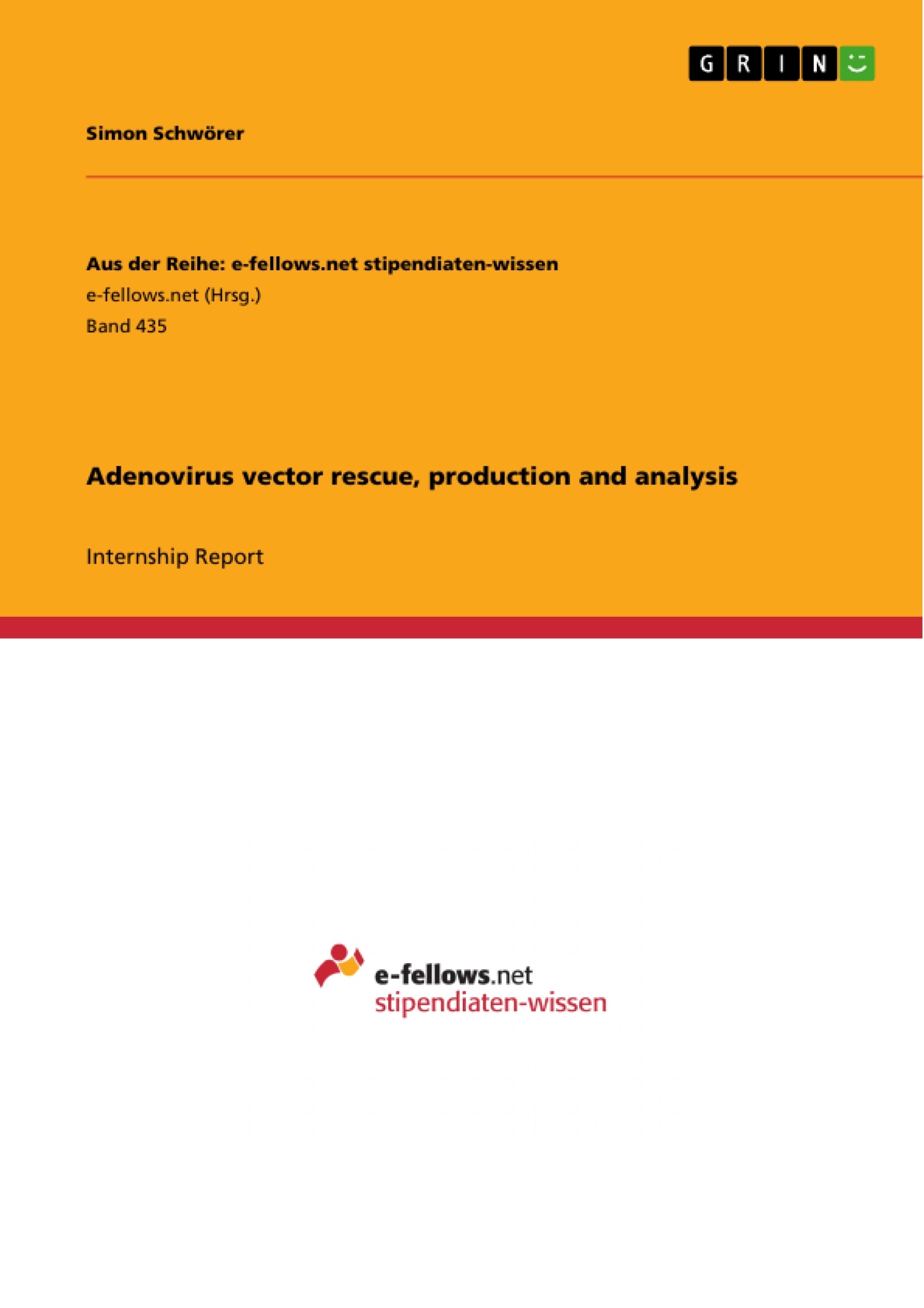Adenoviral vectors are among the oldest and most widely used vectors for gene therapy applications. Compared to other types of vectors, they have many advantages, including the extensive packaging capacity, the ability to transduce a variety of different cell types, and its potential for high-titer preparations. This report focuses on the main steps for production of first-generation adenovirus vectors as well as the introduction and principles of the most important methods to analyze and characterize adenovirus vector preparations.
Table of Contents
- Adenovirus: structure and biology.
- Viral proteins
- Replication of adenovirus genome
- Types of adenoviral vectors
- Production of adenoviral vectors
- Generation of infectious plasmids
- Bacterial transformation
- Midiprep
- Control gel-Digestion:
- Transfection into producer cell lines.
- PEI tranfection of linearized plasmid.
- Harvesting of Adenovirus
- Amplification of Ad vectors.
- Virus prep...
- Generation of infectious plasmids
- Analysis and characterization
- Vector titration .
- Infection with different MOI.
- Comparison of the efficiency of different vector systems..
- PEI Transfection
- Transfection with different N/P ratios.
- Transfection vs. transduction efficiency.
- Neutralization assay
- PEI Transfection
Objectives and Key Themes
This practical training report delves into the production, analysis, and characterization of adenoviral vectors, a common tool in gene therapy research. The report provides a detailed overview of the various steps involved in adenovirus vector production, including the generation of infectious plasmids, the transformation of bacteria, and the transfection of producer cell lines. Additionally, it explores techniques for analyzing and characterizing the efficiency and properties of these vectors, such as vector titration and neutralization assays. Key themes covered include:- The structure and biology of adenoviruses
- The different types of adenoviral vectors
- The production and characterization of adenoviral vectors
- The efficiency of different vector systems
- The potential for gene therapy applications
Chapter Summaries
The report begins with a description of adenovirus structure and biology, outlining the viral proteins and the process of adenovirus genome replication. The document then provides an overview of various types of adenoviral vectors, including first-generation, second-generation, and high-capacity vectors. Chapter 3 focuses on the production of adenoviral vectors, delving into the generation of infectious plasmids, bacterial transformation, and the midiprep purification method. The chapter concludes with a description of the transfection and amplification processes involved in adenovirus vector production. Chapter 4 covers the analysis and characterization of adenoviral vectors. This chapter explores different techniques such as vector titration, OD260 measurement, and the slot-blot assay. It also discusses the infection of cells with different MOIs (multiplicity of infection). Finally, Chapter 5 examines the efficiency of different vector systems. The chapter compares PEI transfection with different N/P ratios and explores the differences between transfection and transduction efficiency. It concludes with a detailed description of the neutralization assay.Keywords
The report focuses on adenoviruses, gene therapy, viral vectors, vector production, bacterial transformation, plasmid DNA, transfection, transduction, vector titration, neutralization assays, and the efficiency of different vector systems. These keywords highlight the core concepts and techniques discussed in the report.
Final del extracto de 14 páginas
- subir
- Citar trabajo
- Simon Schwörer (Autor), 2012, Adenovirus vector rescue, production and analysis, Múnich, GRIN Verlag, https://www.grin.com/document/193918
Leer eBook



